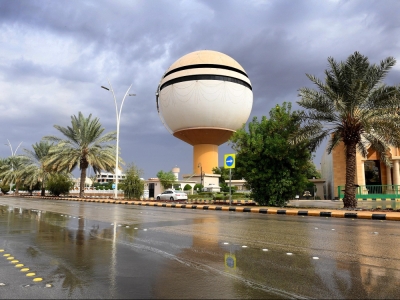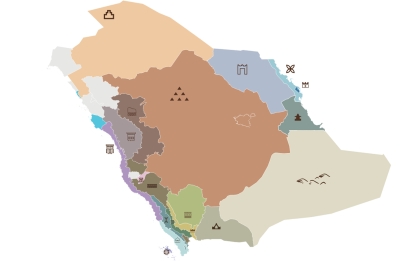

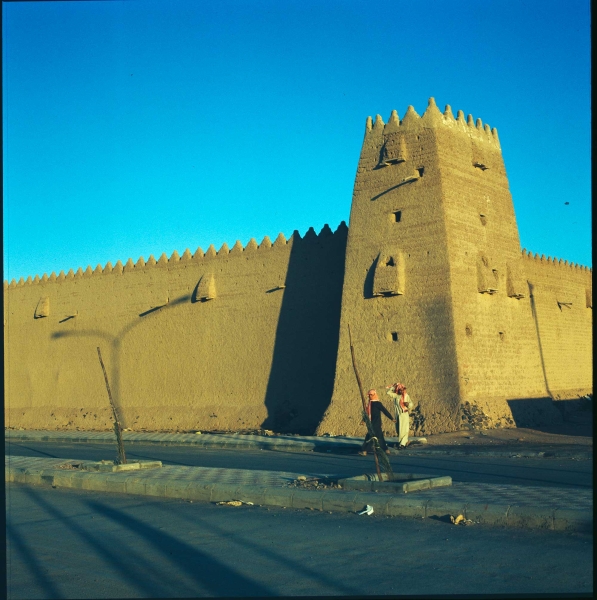
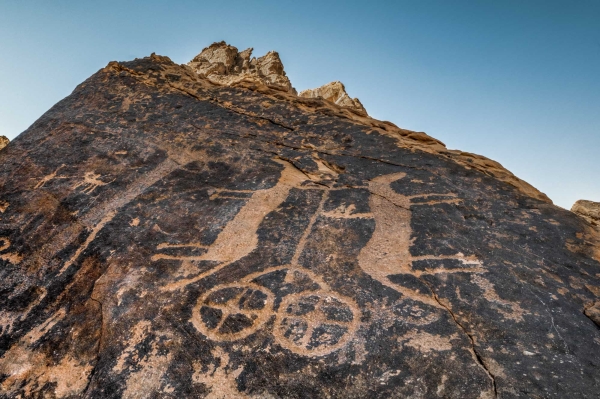
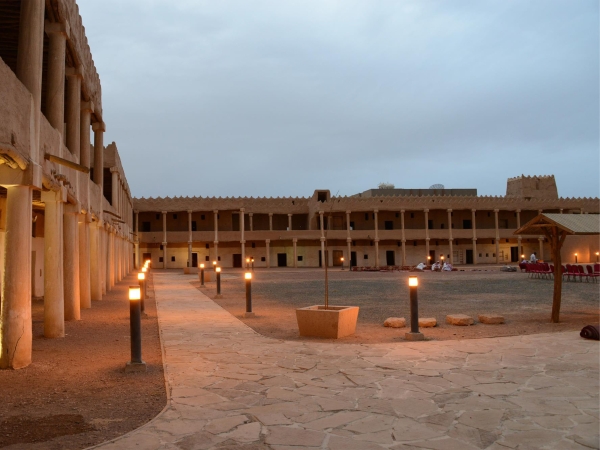
The visual icons in Hail Province are associated with the places where they are located, as architectural or natural icons. They can be used as symbols referring to the region they belong to, within Saudi culture in general, as follows:
Rock drawings
They are represented by the sites of Jubbah and Shuwaymis, which were included in 2015 in the UNESCO World Heritage List, making them the fourth archaeological site to be listed in the Kingdom.
The Shuwaymis site contains 5,431 inscriptions in Arabic, and drawings on the Raat and al-Manjour mountains, consisting of human, plant, and animal scenes, as well as other symbols.
The archaeological site of Jubbah, located on Umm Sinman Mountain, includes several rock carvings dating back to the Neolithic Pottery period.
Additionally, there are several other sites that contain a number of rock carvings, including Janin, Mahaja, Jabal Arnan, Jabal al-Asad, Jabal Habran, Jabal al-Misma, al-Ha'it, and al-Huwait.
Forts and Palaces
Hail Province has several archaeological forts and palaces, including:
A'arif Fort: Built in 1840 atop a medium-height mountain to protect the city from the south.
Barzan Palace: Made of mud, it is considered one of the city's most famous buildings.
Qishla Palace: Built in the early 1960s, it features all the architectural elements characteristic of local architecture in the central part of the Kingdom.
Architectural Designs
Al-Rajhi Mosque: Built with a design that makes it an architectural icon distinguishing Hail Province. It was constructed in 2006, covering a total area of 8,800 m².
Natural icons
Natural visual icons indicating Hail Province:
Aja and Salma Mountains: These two nearby mountains feature a large number of granite domes and standing columns. They contain several seasonal and permanent springs, and the valleys of these mountains are notable for their abundance of acacia and palm trees.
Related quizzes
Related articles
